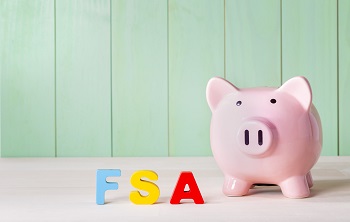IRS Belatedly Announces Increase to 2019 FSA Contribution Limits
The Internal Revenue Service (IRS) announced a cost of living increase to the flexible spending account maximum amounts to $2,700 for FSA for the 2019 plan year beginning on January 1, 2019. The new maximum of $2,700 is up $50 from $2,650 in 2018. The maximum also applies to the limited purpose FSA, which can be used for dental and vision expenses until the medical plan deductible is met, at which time the plan converts to a health care FSA. The Limited purpose FSA also works in tandem with health savings accounts (HSAs). This change applies only to salary reduction contributions under a health care FSA. It does not apply to employer-provided contributions, also known as flex credits.
Other tax exclusion changes:
- Transit and parking employee benefits: The monthly limit on fringe benefit exclusion for transit and parking was increased to $265 from the 2018 limit of $260.
- Retirement plans: The maximum contribution limit for employees contributing to a 401(k), 403(b), or 457plan has been adjusted to $19,000, a $500 increase from the 2018 limit.
- Adoption assistance programs: The maximum yearly exclusion for qualified adoption expenses in taxable year 2019 will be $14,080, up from 413,840 for 2018.
- QSEHRA: The maximum reimbursement for a qualified small employer health reimbursement arrangement (QSEHRA) for 2019 is now $5,150 for individual coverage (previously $5,050 in 2018) and $10,450 for family coverage (previously $10,250 in 2018).
Typically the changes in limits are issued in October, just prior to the start of a majority of employee benefit open enrollments. This year, similar to the past few years, the announcement came after many employees had already selected their annual contribution amounts. The timing will cause employers to either leave the maximum at last year’s amounts or force them to re-open the election period for the FSAs in order to allow employees to elect the additional $50.
An important feature of FSAs is that contributions are not subject to taxes (pre-tax dollars) including social Security and Medicare payroll (FICA) taxes.
Health FSAs can also be funded by both pretax dollars by employees, employers or both. Additionally, employer contributions don’t apply to the annual limit ($2,700 for 2019). However, if the employer contribution is a result of employees’ use of cafeteria plan flex credits that employees could have elected to receive as taxable wages, then the contribution would count toward the $2,700 limit, notes Janet Stebbins, a benefits analyst with Marsh Consulting Group in a recent Society of Human Resources Managers (SHRM) article.
How funding works:
- Employee A contributes $1,000 can receive up to a $1,000 match from his or her employer.
- Employee B contributes $350 could receive up to $500 from his employer.
Why the difference?
“For the FSA to remain an “excepted benefit” not subject to Affordable Care Act reporting requirements, employer contributions to the health FSA cannot be more than an employee’s salary-reduction contribution,” says Harrison Stone, general counsel and compliance officer at ConnectYourCare, a benefits administration firm in Baltimore, MD. If the employee’s contribution is less than $500 annually, the employer can still contribute up to $500.
Employers, while they can contribute more, will typically limit their contributions to no more than $500 as it makes it easier for the FSA to meet certain requirements in the Affordable Care Act and easier for plan administration.
For 2019, since the new maximum is now $2,700, the total funding maximum is now $3,200 with the employer contributing up to $500.
Employers are not required to adopt the new FSA maximums, but if they decide to, they will need to update Section 125 cafeteria plan documents and inform any third-party administrators of the change.
PASBA member accountants bring the collective resources of a nationwide network of Certified Public Accountants, Public Accountants, Enrolled Agents and other practitioners available to answer your tax and financial questions and streamline your business accounting, bookkeeping, and payroll operations.
To find a trusted accountant in your area, visit www.SmallBizAccountants.com.
Please be advised that, based on current IRS rules and standards, any advice contained herein is not intended to be used, nor can it be used, for the avoidance of any tax penalty that the IRS may assess related to this matter. Any information contained in this article, whether viewed or subsequently printed, cannot be relied upon as qualified tax and accounting advice. Any information contained in this article does not fall under the guidelines of IRS Circular 230.




